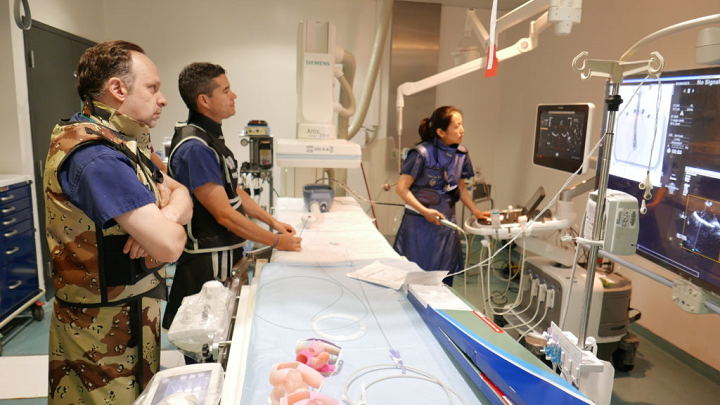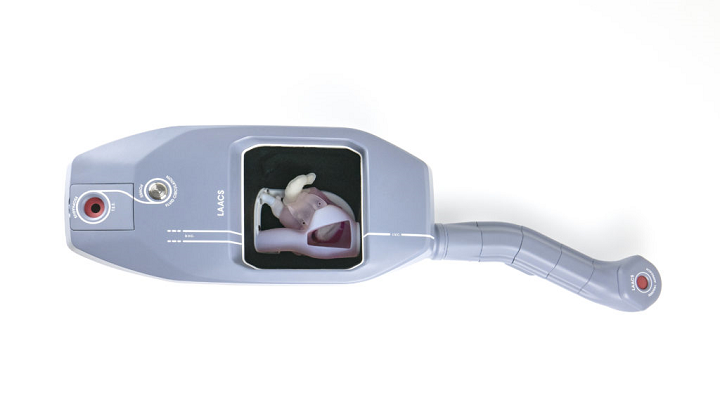Boston and Paris-based medical technology company BIOMODEX wants to improve the way that doctors and surgeons train for procedures; having sat nervously in several family waiting rooms at various hospitals in my lifetime, I am all for this. The company creates customizable, biorealistic haptic simulators and 3D printed medical models that physicians use to rehearse their procedures, and the Montreal Heart Institute (MHI) is partnering with BIOMODEX to make these trainers even better. Of course, as MHI is a top specialized cardiology center, the two will be focusing on a new cardiovascular training solution, featured realistic 3D printed pulsating heart models.
Together, BIOMODEX and MHI will develop multiple case-specific 3D printed models of aortic and mitral valves that cardiologists can use to simulate, and prepare for, these tricky in-valve heart repairs.
“We believe Biomodex’s biorealistic haptic simulators will facilitate and improve training and case-specific rehearsal in structural heart procedures. We are excited to develop with Biomodex new cutting-edge training tools that have the potential to reshape how cardiovascular care is delivered,” said Dr. Walid Ben Ali, cardiac surgeon at MHI.
Founded in 1954 and affiliated with the Université de Montréal, MHI houses Canada’s largest cardiology research, prevention, and genetics centers, so it’s a great partner for BIOMODEX to collaborate with in this endeavor. Additionally, physicians at MHI used the company’s LAACS™ (Left Atrial Appendage Closure System) simulator last year to practice for a Left Atrial Appendage Occlusion (LAAO) procedure, so the institute is already familiar with its technology.
“The future of medicine resides in utilizing technology to provide our patients with better, personalized care solutions. Using case-specific 3D printed models will allow our cardiologists to rehearse procedures on a replica of their patients’ mitral and aortic valves and therefore minimize risks and improve clinical outcomes,” explained Dr. Jean-Claude Tardif, Director of MHI’s Research Center, Professor of Medicine at Université de Montréal, and holder of the Canada Research Chair in personalized medicine.
Together, the BIOMODEX and MHI teams will create these heart valve models for surgeons to use in simulations of patient-specific procedures ahead of their actual cases. The 3D printed models will be used with a special cardiac pump and station, which will allow the valves to open and close just like a beating heart. Plus, physicians training with the models will be able to measure the pressure inside the chamber to make sure the proper blood flow dynamics are happening.
BIOMODEX bases the anatomy of its models on patients’ specific medical image, and prints them out of advanced materials that realistically simulate the real organ’s haptic feedback and biomechanics. They can even replicate blood viscosity and flow, and are compatible with ultrasounds as well.
“Physicians often tell us they are impressed by how well our structural heart solution simulates the feel, friction, and haptic feedback of real heart tissue and blood vessels,” BIOMODEX President and CEO Ziad Rouag said. “Simulating valve movement goes well beyond that — and will take our solution to the next level. We are essentially delivering a complex system that replicates a beating heart with valves that open and close as blood moves through. The team here at Montreal Heart Institute has the expertise to make our vision a reality, and we welcome the opportunity to collaborate.”
3D printed pre-surgical training models, like the cardiovascular valve ones BIOMODEX and MHI will be developing, can really help increase a clinician’s confidence, which can then lead to fewer medical and surgical errors. The more prepared a surgeon is going into a procedure, the better the results are all around—when there are fewer errors, hospitalization costs go down, and patients are happier and can go home sooner. In addition, using 3D printing to create these models means they can be much more complex and realistic as well, which can also improve acute and chronic surgical outcomes.
At our Additive Manufacturing Strategies summit, held online and in-person in New York City March 1-3, 3D printing for healthcare is one of the critical industry verticals that will be discussed by panelists and keynote speakers. These discussions will include topics like 3D printed implants, medical regulations, end-user hospitals, and 3D printing in surgical planning. To learn more about these topics and many others, you can register to attend AMS 2022 here.
(Source: Financial Post / Images: BIOMODEX)
Subscribe to Our Email Newsletter
Stay up-to-date on all the latest news from the 3D printing industry and receive information and offers from third party vendors.
You May Also Like
3D Printing Financials: Fathom Struggles in Financial Quicksand During Critical Transition
Facing a year of key transitions and financial pressures, Fathom (Nasdaq: FTHM) has filed its annual report for 2023 with the U.S. Securities and Exchange Commission (SEC). The document outlines...
Latest Earnings Overview for Australian 3D Printing Firms Titomic and AML3D
Australian 3D printing manufacturing firms Titomic (ASX: TTT) and AML3D (ASX: AL3) reported their financial results for the period from July to December 2023, marking the first half of their...
3D Printing Webinar and Event Roundup: April 7, 2024
Webinars and events in the 3D printing industry are picking back up this week! Sea-Air-Space is coming to Maryland, and SAE International is sponsoring a 3D Systems webinar about 3D...
3D Printing Financials: Unpacking Farsoon and BLT’s 2023 Performance
In the Chinese 3D printing industry, two companies, Farsoon (SHA: 688433) and Bright Laser Technologies, or BLT (SHA: 688333), have recently unveiled their full-year earnings for 2023. Farsoon reported increases...


































